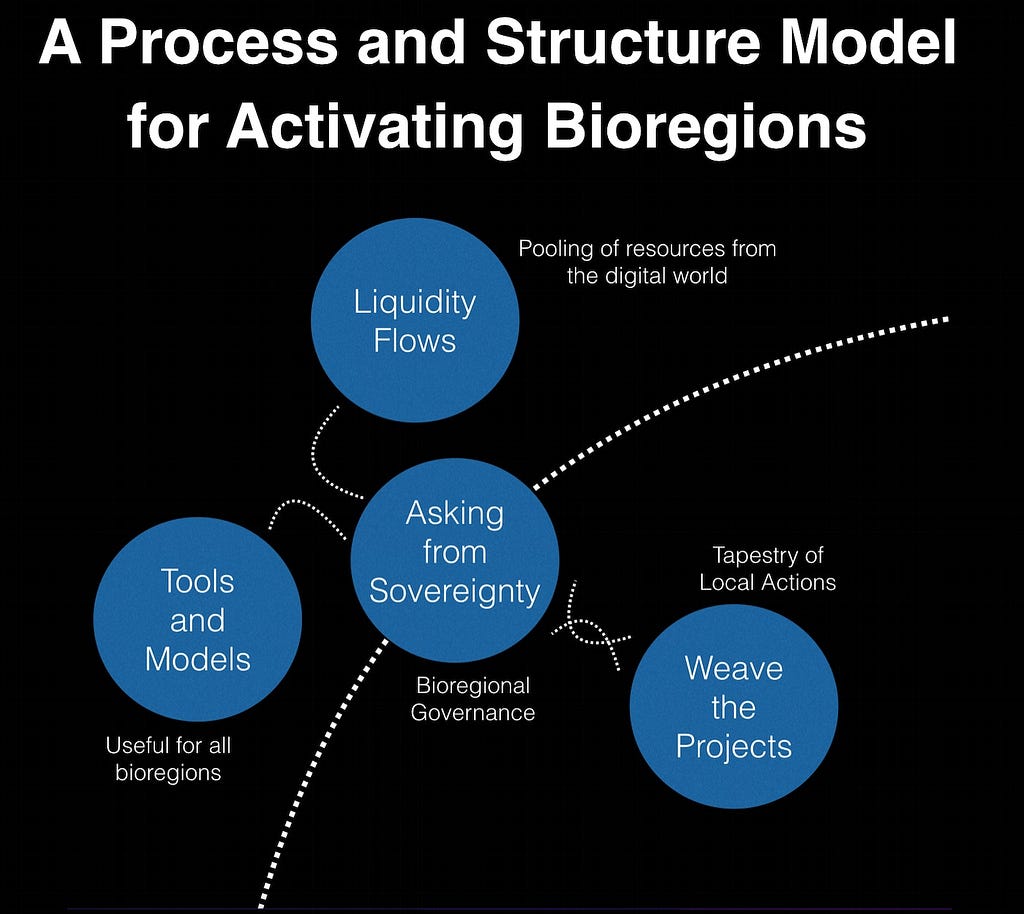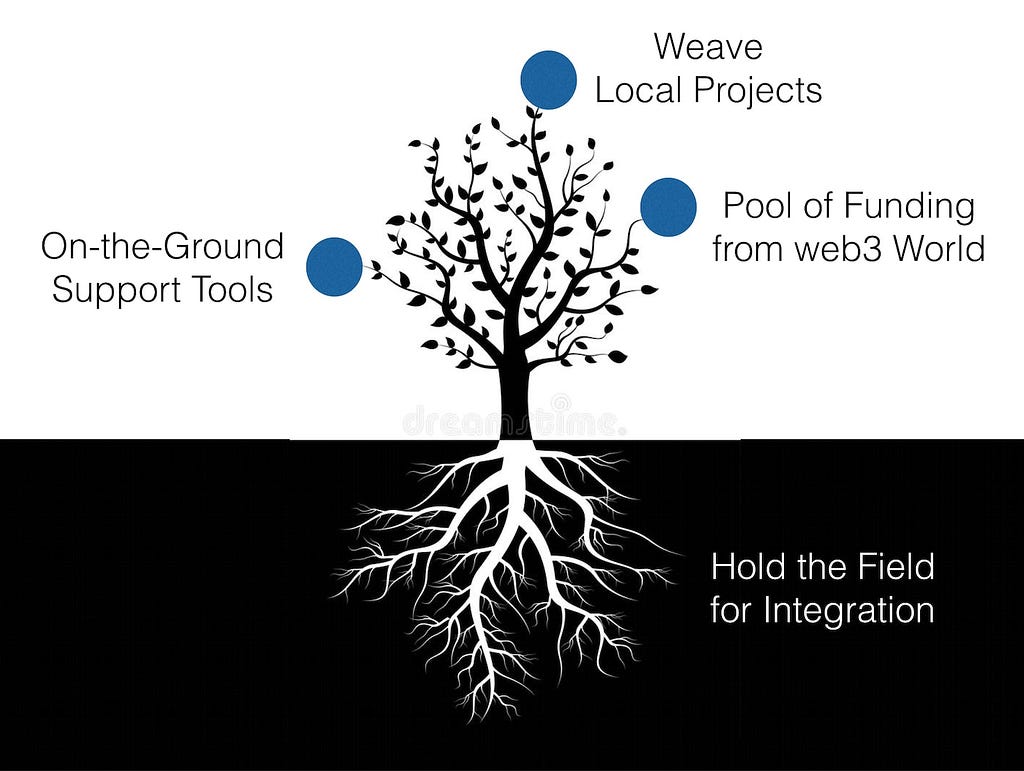We are prototyping new ways to collaborate with Barichara that can be applied to other bioregions in the future…
A few months ago Penny Heiple and I hosted the first call for Barichara Projects where we are organizing to help with fundraising and other supports that can collaborate with those who participate virtually from around the world.
The focus was on how to create structures and processes for collaboration. You can watch the recording here:
Watch this video to see how we are learning to collaborate.
In this article, we would like to share some of the structures that are emerging for how to “activate” and sustain the flows of exchange across a tapestry of local projects. Coordination and integration is possible because of the territorial foundation — as described in the recent article called Two Things Landscapes Need.

One of the key insights that emerged for us during yesterday’s kick-off meeting was that there are four distinct processes (or capacities, if you prefer) that need to be present for this collaboration to be sustained.
We noted that the local landscape team needs to weave projects within their bioregion. This helps ensure that unhealthy competition doesn’t arise between efforts that are deeply aligned with each other.
Similarly, there needs to be a process in which the outsiders ask for sovereignty* to collaborate in a mutually beneficial way with local projects. This is held and sustained by the bioregional governance process of the landscape team. For Barichara, these two processes are managed by the territorial foundation.
*This terminology is used to draw attention to the need to reverse colonialism by seeking to partner with local projects in a manner that respects their sovereignty.
The two additional processes are the pooling of resources from the outside world in liquidity flows like those that can be structured with web3 and crypto tools; and creation of tools and models that are useful for various projects that can be brought to many different bioregions. Here we might think of a funding platform that mobilizes resources that come to the tapestry of local projects or a specific tool that a digital nomad develops for general use in bioregions around the world.

Every bioregion will need to create four workflows in order to sustain collaboration in the manner we are developing in Barichara right now.
- Weave the Local Projects :: A local team forms to help projects organize themselves into a “bioregional investment platform” such that synergies and collaboration arise among the projects.
- Pool of Funding :: Another workflow arises around the pools of funding from the web3 world. This is where teams can organize to create liquidity pools, engage with platforms like Gitcoin or Giveth, and so on.
- Create Support Tools :: Another workflow arises for specific teams to create tools that help on-the-ground projects. This might be Sev Nightingale and Samantha Tan designing value-flow models for ecological valuation or other specific efforts that apply at the project level.
- Hold the Field for Integration :: Here we refer to the importance of “holding the field” for the three other workflows to remain coherent and synergistic with each other. Penny and I (as hosts of this community) serve in this capacity at the moment.
What we envision from here is the creation of three distinct workflows to prototype the process for “bioregional activation” using Barichara as our first laboratory. One that is held by the territorial foundation to weave projects and present a coherent request-for-help that honors the sovereignty of local projects while helping them become more synergistic with each other.
Another that develops funding pools from the web3 world to activate bioregions at the scale of bioregional investment platforms and the tapestry of projects they represent.
The third workflow is for incubating the creation of tools and models that can help a diversity of on-the-ground projects in different bioregions. This is where concrete design/build efforts can be undertaken and learnings shared across the larger community of Bioregional Activators.
All of this is sustained by a background workflow to hold the field for integration of the other three workflows. This is what we are doing now with articles like this one.
Please share your thoughts in the comment thread below. We can begin setting these structures and workflows in place in the days ahead.
We freely host this space in the spirit of the gift economy. If you are inspired and would like to support our work, you can make recurring monthly donations on Patreon, make a one-time donation on Paypal, or reach out to arrange a cryptocurrency gift.
Tagged with :







